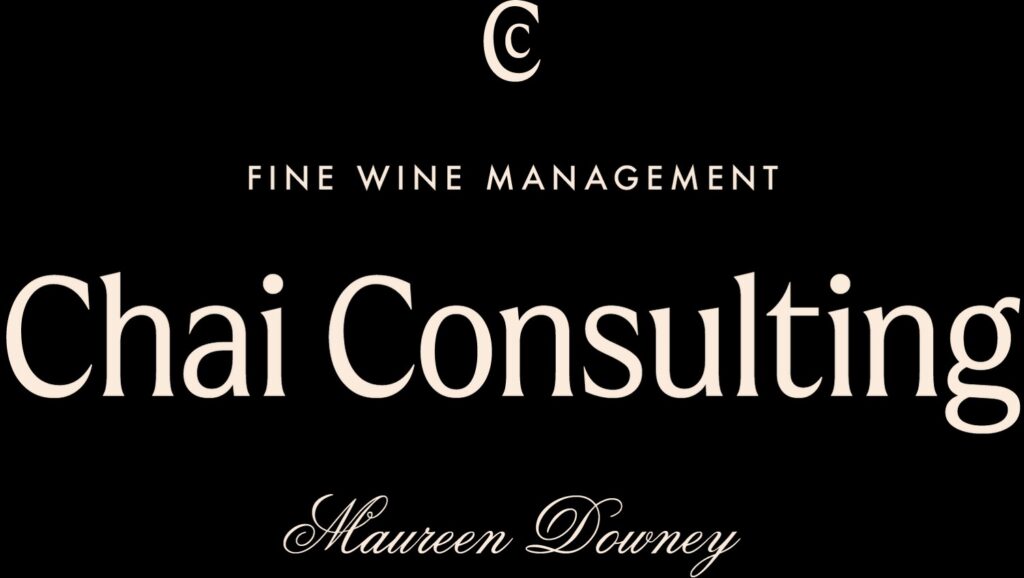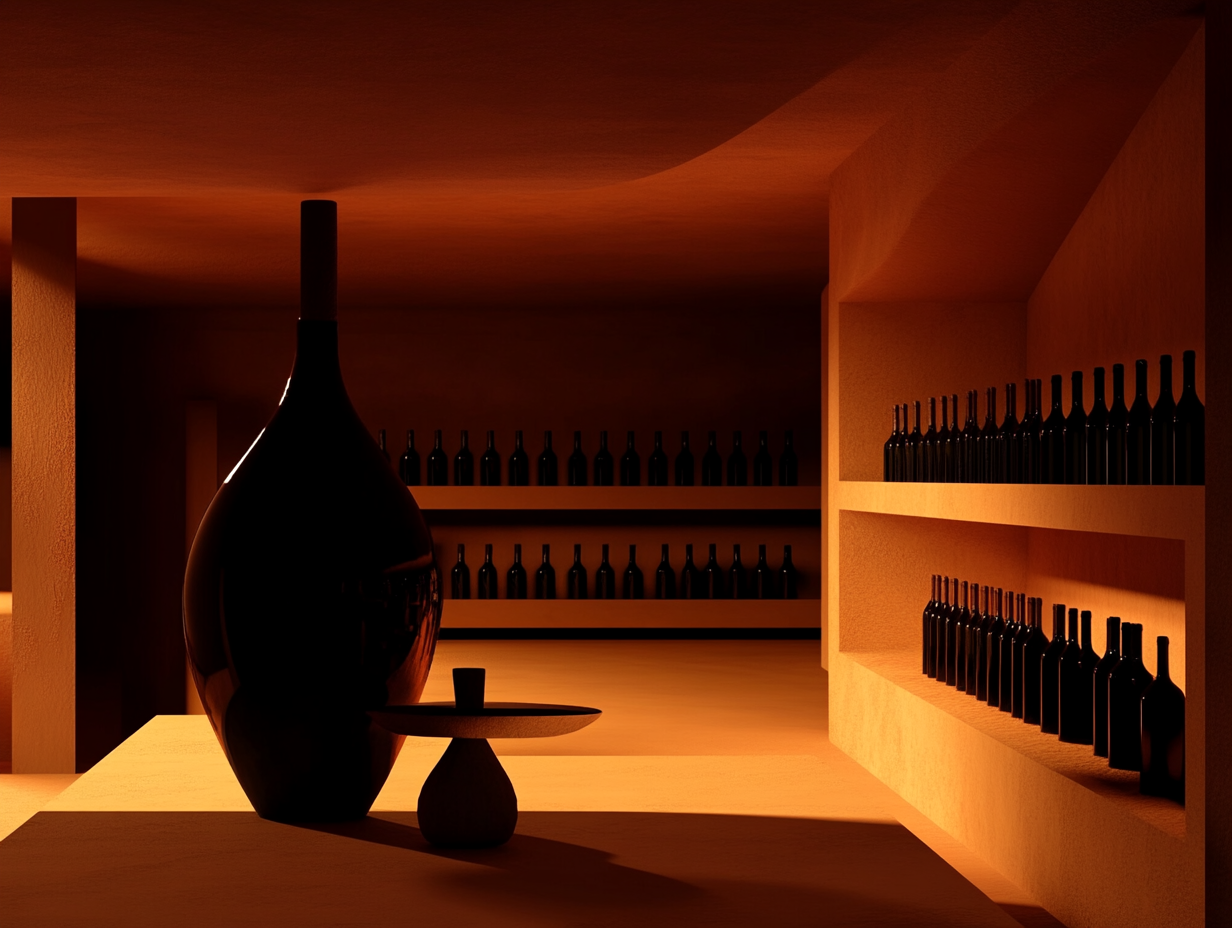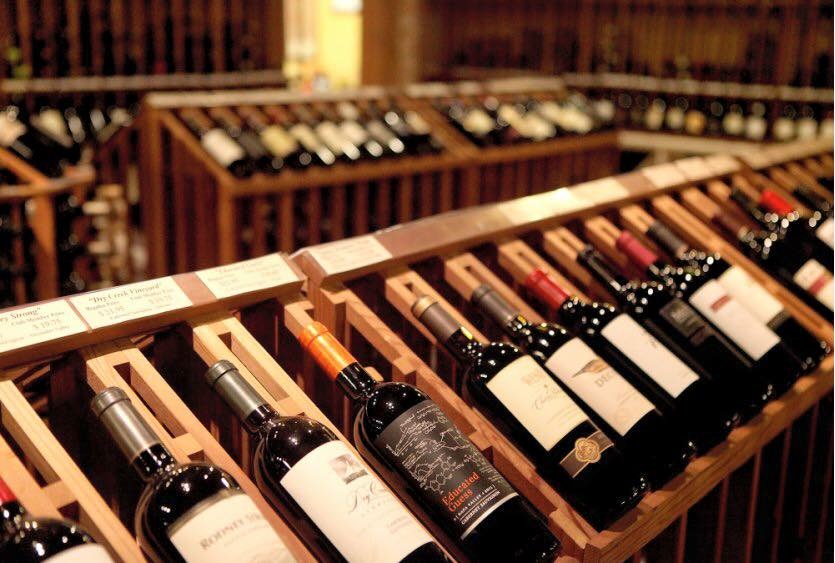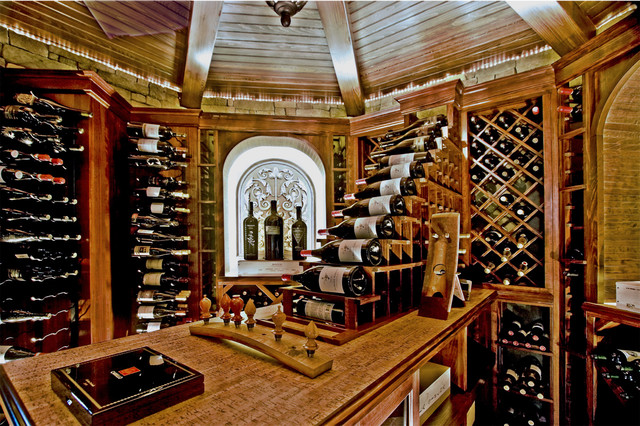How to identify whether your wine bottle is real or fake… Big wine racket exposed
National Desk: A major counterfeit liquor racket has been uncovered in a secret room behind a licensed liquor store in Ghaziabad’s Shastri Nagar area. According to police, duplicate premium brand liquor was being manufactured in the secret room behind the store. A major counterfeit liquor racket has been busted in a licensed liquor store in Ghaziabad’s Shastri Nagar area after a joint raid by police and the excise department. The operation, which involved manufacturing duplicate premium brand liquor in a secret backroom, led to several arrests. Original bottles, fake IMFL: Gang operating from licensed shop in Ghaziabad market busted Ghaziabad: In the heart of a bustling market in Shastri Nagar’s Rajapur, a licensed liquor outlet looked like any other shop in the neighbourhood. But behind the shuttered backroom, cops said, was the final link to an interstate racket that was using premium whisky bottles and locally sourced illicit liquor to cheat customers.The racket was busted late on Friday when an excise department team and police raided the premises, seizing hundreds of empty branded bottles of Royal Stag, McDowell’s and Blender’s Pride, along with counterfeit packaging and spurious whisky allegedly prepared for sale as IMFL.According to the excise team, the supply chain was designed to mimic a proper bottling process with bottles sourced from Chandigarh, fake caps procured from Meerut, and refilling carried out in Ghaziabad. Excise inspector Rakesh Tripathi said the first breakthrough came when a team intercepted Meerut-resident Sharma with 74 bottles of 999 Power Star—a whisky labelled for sale saini was already on the excise department’s radar for previous From there, the trail led investigators to the Rajapur model Meerut-resident Pradeep Sharma with 74 bottles of 999 Power Star—a whisky labelled for sale only in Chandigarh—and 135 fake metal caps. Also seized was a two-wheeler, which Sharma allegedly used to shuttle the bottles across the cities.”During questioning, he revealed that he regularly smuggled liquor from Chandigarh into Ghaziabad and received fake caps from a Meerut-based supplier Dilawar Saini,” Tripathi said.
Saini was already on the excise department’s radar for previous violations.From there, the trail led investigators to the Rajapur model shop, where three men—Kuldeep, Bhanu Pratap Singh and Navi Hussain—were allegedly running the illegal refilling unit. Inside the shop, officials recovered 64 more bottles of 999 Power Star, 11 bottles of Officer’s Choice, 75 bottles filled with allegedly adulterated liquor, and 686 fake caps.”What was striking was the range of high-end brands involved. Empty bottles of Royal Stag, McDowell’s, Blender’s Pride, All Seasons and Rockford were stockpiled. The gang refilled these bottles with cheaper alcohol, sealed them with counterfeit caps, and sold them at the original retail price,” district excise officer Sanjay Singh said. “In total, we recovered 821 fake caps, 149 filled bottles and 270 empty branded bottles. We are recommending that the shop’s licence be cancelled.”The four men were arrested after an FIR was registered at Kavi Nagar police station under sections 60, 63 and 72 for illegal manufacture, sale or possession of intoxicants and possession of vehicles used in offences of the Excise Act. Charges have also been filed under BNS sections 61 (criminal conspiracy), 111 (organised crime), 318 (cheating), 345, 347, 350 (related to counterfeiting goods) and Section 54/63 of the Copyright Act. Officials said the supplier of fake caps, Saini, and the model shop’s licensee, Pallavi Rai, have also been named in the FIR, while an investigation to trace other members of the network was underway.”Our focus now is to dismantle the wider supply chain and stop smuggling from Chandigarh into western UP,” Singh said.
Ashni Dhaor is a Special Correspondent with the Times of India, with over a decade of experience across print, electronic, and digital media. She specialises in long-form features, grassroots civic-policy investigations, and human-interest stories, covering urban development, local governance, nightlife, and evolving lifestyle trends in Noida and Ghaziabad.
The hidden cost of fraud: How Airtel Payments Bank keeps your main account safe
Text Size
Digital fraud affects more than money; missed bills, penalties, and stress can follow. Smart banking habits help protect savings and manage daily payments safely.
Most of the people rarely carry cash anymore. From paying the grocer via UPI and booking cabs to renewing OTT subscriptions and shopping online, their phone has become their wallet. Today, millions of digitally savvy Indians enjoy the speed and convenience of cashless payments. But the same convenience that makes life easier also opens the door to growing digital risks. According to RBI1, frauds tied to digital payments have more than tripled in FY25, while government records reveal that India lost over ₹22,800 crore to cybercrime in 2024 alone2.The domino effect of digital fraudDigital fraud isn’t just about stolen money; it sets off a chain reaction. In India, scams range from phishing to fake apps, often hitting everyday users who rely on UPI and online banking. Young professionals and urban consumers are frequent targets. Beyond financial losses running into thousands of crores each year, victims face missed payments, penalties, and mounting stress that ripple across their daily lives.Limiting exposure: The smart way to spendNow that you see how one small fraud can create a domino effect, what’s the way to protect yourself? One of the simplest solutions is to separate your everyday spending from your core savings, and that’s exactly what Airtel Payments Bank’s Safe Second Account helps you do. By keeping the money you need for daily transactions in this dedicated account, you ensure that even if a scam occurs, your core savings are unaffected and bigger financial setbacks are averted.Key features that give you extra control:
- Limit management – Cap daily or per-transaction limits, stick to your budget and avoid overspending.
- Sleep mode – Instantly pause all outgoing payments to protect your account when not using it actively.
- Fraud alarm – Report suspicious activity, block your account, deactivate & reset your mPIN, and alert a dedicated fraud management team with a single swipe.
This approach not only limits potential losses but also keeps your financial routine stress-free and uninterrupted.Keep your savings safe while banking smartWhile digital scams may sometimes be unavoidable, their hidden costs – missed bills, penalties, and financial stress – don’t have to spiral out of control. By adopting smart banking practices, such as using Airtel Payments Bank’s Safe Second Account, you can protect your primary savings while confidently managing daily expenses. Features such as limit management, sleep mode, and fraud alarm not only safeguard money but also provide peace of mind, making routine transactions safer and more organised.

Fake alcohol, also known as counterfeit or illegally produced alcohol, is made in unlicensed distilleries and often packaged to resemble legitimate brands.
Consuming fake alcohol poses severe health risks due to toxic ingredients like methanol, which can lead to blindness, organ failure, and death.
Symptoms of consuming counterfeit alcohol include nausea, vomiting, abdominal pain, dizziness, and confusion, with long-term effects such as liver and kidney damage.
To avoid fake alcohol, remember the “4Ps”: product (watch for fake versions), price (if too cheap, it’s suspicious), packaging (check for poor quality or tampering), and place (buy from reputable retailers). The Dangers of Fake Alcohol

What is fake alcohol?
Alcoholic drinks sold without payment of duty (tax) are illegal. The sale of illicit alcohol is an estimated 8% of alcohol tax revenue and costs the UK around £1.2 billion per year in lost tax revenue. A sobering thought when you consider that £1 billion is enough money to cover the current nottingham University Hospitals NHS Trust, an NHS Trust with 15,000 staff, 90 wards, and 1,700 beds across three main sites, delivering district general services to 2.5m residents, delivering specialist care to 4.5m people from across the East Midlands and playing a vital role in the education and training of doctors, nurses and other to identify whether a wine bottle is real or fake, examine the packaging details, verify the source and provenance, and apply common sense (e.g., if the price is too good to be true, it likely is). More sophisticated methods involve using a UV light to check label aging and a jeweler’s loupe for print quality. How you can spot fake wines Maureen Downey has brought down some of the wine industry’s most notorious counterfeiters like Hardy Rodenstock and Rudy Kurniawan.

The World’s Leading Wine Collection Experts
Chai Consulting is the trusted authority in wine collection management. Whether you’re building, valuing, or liquidating a cellar, we deliver clarity, confidence, and results—anywhere in the world.
Founded by renowned wine expert Maureen Downey in 2005, Chai Consulting is the globally recognized authority in fine wine collection management. We are independent, discreet, and precise — trusted by collectors, estates, institutions, and fiduciaries around the world.
Our team has consulted on, curated, and liquidated some of the world’s most significant wine and spirits collections. As expert witnesses, we’ve played a decisive role in winery loss claims, criminal and civil litigation, and appraisals for insurance, tax, and estate needs.
With offices in the U.S., Europe, and Asia, Chai Consulting brings global reach with local expertise. Whether you’re investing, managing an extensive cellar, or preparing to sell a collection, we make the process clear, secure, and highly rewarding. Our Services
Full-Spectrum Wine Collection Management
We offer conflict-free, expert services built for high-net-worth individuals and institutions:
Collection & Inventory Management
Streamlined organization, cataloging, and maintenance that puts clarity and control first.

Liquidation & Sourcing
Sell for best value—or acquire rare bottles—with sharp market insight and absolute integrity.

Appraisals & Expert Witness
Precise valuations for insurance, estate planning, litigation, and loss—even in complex legal contexts.

TCM® Wine Authentication
Our proprietary method verifies provenance and condition—pre-sale or post-purchase—with results you can trust. Authenticated bottles earn certification through
our secure digital registry of provenance.

Wine Fraud Presentation & Authentication Training Seminars
November 14-16 Singapore
If you work with or collect fine and rare wine – this seminar is for you. The three-session seminar covers the scope of wine and spirits fraud, the most common practices of wine counterfeiters and the bottles they create and the basics of bottle inspection for authentication as well as bottle condition which speaks to wine health and provenance.
Wine and spirits fraud is much more than just counterfeits, including theft, investment schemes and wine fund frauds. We describe the wide range of ways scammers defraud producers, vendors, consumers, and governments alike. We discuss and describe the different types of counterfeit bottles including how and where they are made. Of course, fine and rare counterfeits are the focus. Discussions include infamous counterfeiters past and present, the bottles made by each, and how to spot their work. We spend a significant amount of time describing where and how current counterfeits are being produced and sold, and importantly what we do to spot these counterfeits in the field.
Advanced participants are introduced to the TCM® Systematic Approach to bottle inspection, instructed on the methods and intricacies of bottle inspection including a look at all the top producers, the most at risk highly counterfeited bottles and often secretive the ani fraud to look for. Through extensive workshop sessions we encourage participants to turn their newly gained knowledge into practical abilities by demonstrating inspection skills and sharing findings. By the end of the three sessions, participants should have a grasp on the red flags and counterfeit tells of authentication and be able to identify and prevent counterfeit and damaged bottles from becoming part of their inventories. Identifying a counterfeit “big wine” bottle requires a meticulous eye for detail, focusing on provenance (documented history), physical inspection of the bottle’s components, and, for modern wines, anti-fraud technology. Luxury Wine: 7 Powerful Ways to Confidently Identify Genuine High-End Bottles How to Identify Luxury Wine

In a world where elegance and refinement are often expressed through taste, luxury wine stands as a hallmark of sophistication. From high society gatherings to quiet, intimate dinners, the presence of a finely crafted bottle speaks volumes. But not every expensive wine meets the true definition of luxury. Understanding how to identify it is not only about the price tag but also about provenance, craftsmanship, aging potential, and the uniqueness of the bottle. Wine connoisseurs and novice collectors alike often find themselves puzzled: how can you distinguish a genuinely high-quality bottle from a cleverly disguised fake? In this article, we explore the factors that define true luxury, drawing inspiration from expertly curated cellars such as Vintage Cellar.
The aim is to help enthusiasts make smarter choices when building a collection or selecting the perfect gift. True luxury wine embodies a unique story of terroir, tradition, and time that cheaper alternatives can’t replicate. These wines are not just for drinking; they are investments, cultural artifacts, and conversation pieces. With the growing global demand for fine rare wine, it’s more crucial than ever to educate yourself. Whether you’re buying for personal enjoyment or long-term value, knowing the signs of genuine luxury can protect your investment and enhance your experience.
1. Understand the Brand & Provenance
One of the most important elements of identifying a luxury wine is the origin both geographic and historical. A wine’s brand, or more precisely, the reputation of the estate or vineyard, offers a strong indicator of its quality. Estates in Bordeaux, Tuscany, Napa Valley, and Burgundy that have existed for decades or even centuries are often at the forefront of the high-end market. These wineries invest heavily in soil cultivation, sustainable practices, expert winemakers, and traditional techniques passed down through generations.
Services like Vintage Cellar put great emphasis on provenance, offering wines that are not only prestigious but also come with verifiable records of origin and storage. This eliminates the risk of counterfeit bottles infiltrating your collection. The more documented the wine’s journey from vineyard to bottle, the more confident you can be in its luxury status. Many high-end retailers now offer full transparency with digital traceability systems that can track every bottle. This feature ensures you’re buying a genuine product rather than an overpriced imitation.
Furthermore, producers of fine rare wine often limit production, sometimes releasing only a few thousand bottles annually. The combination of rarity, history, and verified origin contributes to the luxury tag. These wines often gain cult status, with collectors vying to own them before they’re even released to the public. If you’re serious about collecting or gifting high-end wine, always ensure the provenance is rock-solid.
2. Aged vs. Young Wine Differences
Understanding aged vs. young wine differences is fundamental when identifying luxury. At first glance, an older wine may simply look more elegant with its dusty bottle and vintage label. However, its value goes far beyond appearance. Aged wine tends to develop more complex flavors and aromas, often described as tertiary characteristics such as dried fruits, leather, tobacco, and forest floor notes. These result from slow chemical changes occurring in the bottle over years, or even decades.
Young wines, by contrast, showcase fresh, fruity, and floral primary notes. They’re vibrant and accessible, often meant for immediate enjoyment rather than cellaring. While not all young wines are inferior, truly finely aged wine will possess a depth and elegance that younger bottles can’t match. Tannins mellow, acidity balances out, and the overall drinking experience becomes smoother and more harmonious.
To the trained palate, these distinctions are instantly recognizable. A luxury wine that has been well-aged reveals itself in its texture and finish qualities that make it stand apart in blind tastings. Notably, some wines are produced specifically for aging; they might seem unremarkable when young but transform into masterpieces over time. A label indicating long cellaring potential is often a good sign you’re dealing with a bottle of distinction and value.
3. Wine Tasting for Quality

Tasting remains one of the most enjoyable and informative ways to evaluate a wine’s quality. While brand reputation and provenance matter, the proof is ultimately in the glass. A high-end wine will usually exhibit a delicate balance of acidity, alcohol, tannins, and residual sugar. No one element should overpower the others. Instead, they work together in harmony to create a seamless and sophisticated mouthfeel that lingers long after each sip.
Another defining feature of luxury wine is its complexity. You should be able to detect layers of flavors as the wine evolves on your palate from the attack to the mid-palate and finally to the finish. Notes of fruit, spice, earth, and wood may all coexist, unfolding gradually rather than hitting you all at once. This kind of layered experience is rarely found in mass-produced wines.
Luxury also means length how long the flavor persists after swallowing. A brief finish can be a red flag, suggesting a lack of structure or depth. In contrast, finely aged wine offers a lingering aftertaste that develops and shifts as you breathe and contemplate. Whether you’re sipping a Bordeaux Grand Cru or a Super Tuscan, a proper tasting will often reveal more than any label or price tag.
4. Label, Bottle & Capsule Inspection
Another powerful way to identify luxury wine is by closely inspecting the physical features of the bottle. Start with the label: luxury producers often use high-quality, textured paper, foil stamping, and embossed logos. These labels are meticulously designed, and any deviation in design, font, or color could be a sign of forgery. Additionally, the vintage year should be clear, centered, and consistent with the winery’s official release format.
The bottle itself can also reveal a lot. Luxury wines typically come in heavy, dark glass bottles with deep punts (indentations at the bottom). The glass quality will be pristine no bubbles, ripples, or inconsistencies. The shape of the bottle may also follow traditional regional forms, like the slender Burgundy bottle or the broader Bordeaux style. These are all signs of a winery’s attention to detail.
Capsules and corks are another layer of authentication. A wrinkled capsule, poorly printed cork, or irregular seal could mean the bottle was tampered with. How to identify fake vintage wine often starts with this kind of physical inspection. Sophisticated counterfeiters may go to great lengths to replicate labels, but small flaws in packaging can give them away. Always examine these features carefully before purchasing or uncorking a supposedly rare bottle.
5. Provenance and Storage Conditions
The journey of a luxury wine bottle doesn’t end at the vineyard. How it’s stored over the years is just as important as how it was produced. Exposure to heat, light, and fluctuating humidity can ruin even the most prestigious wine. Therefore, proper storage conditions are essential, and they can significantly affect the value and quality of a bottle. Services like Vintage Cellar offer temperature-controlled, humidity-regulated storage in insured, bonded warehouses critical for maintaining luxury wine’s integrity.
Collectors and serious buyers often insist on a full history of the wine’s storage conditions. Details such as whether it has ever been shipped internationally, stored in private or commercial cellars, or exposed to temperature swings can impact the bottle’s resale value. In fact, many wine for collectors lose their appeal if their provenance can’t be confirmed through reliable documentation.
Moreover, modern technology allows for digital storage tracking. Some wine cellars offer platforms that allow buyers to trace the wine’s condition and history before making a purchase. These features are particularly important for fine rare wine, which often changes hands multiple times before being consumed or sold. If you’re aiming to build a reputable collection, insisting on proper storage and full provenance is non-negotiable.
6. Knowing How to Identify Fake Wine
Next, examine the cork for correct branding and the appropriate vintage imprint. Fakes often have inconsistencies in cork printing or no imprint at all. Additionally, the label might be artificially aged, showing coffee stains or artificially induced browning that looks suspiciously uniform. The bottle shape and weight can also be revealing; many counterfeits use standard bottles instead of the heavier glass typically used for high-end wine.
When in doubt, seek a professional appraisal. Some advanced collectors use UV lights and scanning devices to authenticate ink and paper. Still, the easiest safeguard is purchasing from reputable sources like Vintage Cellar, where every bottle is vetted and tracked from origin to sale. If a deal seems too good to be true, it usually is. The more exclusive and rare the bottle, the more vigilant you must be.
7. The Role of Fine Rare Wine in Collector Portfolios
In the world of fine collecting, fine rare wine holds a special place. Unlike other collectibles, wine combines aesthetic, historical, and sensory appeal. Collectors prize it not just for its drinkability but for its long-term value, investment potential, and the status it conveys. Wine investment platforms and auction houses have seen a surge in demand for older vintages from iconic producers, often resulting in exponential price increases over time.
Many collectors approach wine like art focusing on rarity, heritage, and the ability to age gracefully. Some invest in vertical collections, which consist of multiple vintages of the same wine, to showcase how different years express the same terroir. These strategies are often guided by expert advisors or services like Vintage Cellar, who curate collections based on historical performance and aging potential.
Adding fine rare wine to a portfolio also requires proper documentation, valuation, and storage to ensure it retains its worth. As with all collectibles, condition is king. Even a prestigious vintage from a legendary estate can lose its value if mishandled. Serious collectors know this and take every measure to preserve the integrity and story of each bottle they own.

8. Identifying High-End Wine on a Budget
You don’t always need to break the bank to experience high-end wine. With some research and guidance, it’s possible to discover hidden gems that offer the characteristics of luxury at a more accessible price point. One way to do this is to seek out wines from lesser-known regions that share similar climates and soil compositions with world-renowned areas. These wines often provide exceptional value without the prestige markup.
Another method is to look for second-label wines from prestigious producers. These are often made with the same grapes and techniques but are priced lower due to differences in aging or grape selection. Many of these wines deliver impressive structure, complexity, and aging potential hallmarks of luxury wine without the premium price. You can also buy young wines from reputable estates and cellar them yourself, allowing them to mature over time.
Wine clubs, tastings, and insider recommendations are also great ways to discover such bottles. Platforms like Vintage Cellar may offer curated selections and starter collections tailored to beginner collectors. This gives you access to genuine quality and expert advice, without jumping straight into five-figure purchases. With patience and a trained palate, you’ll find that luxury doesn’t always have to come with a sky-high price.
9. The Importance of Education & Expert Guidance
Finally, no journey into the world of luxury wine would be complete without education and mentorship. Wine is both a science and an art, and navigating it without guidance can be overwhelming. Whether you’re exploring tasting techniques or learning how to avoid counterfeit bottles, the advice of seasoned experts is invaluable. Platforms like Vintage Cellar pair clients with knowledgeable wine advisors who tailor recommendations based on personal taste, collection goals, and investment interests.
Education also plays a critical role in long-term satisfaction. As you taste more wines and learn from sommeliers or wine educators, your palate evolves. You’ll start to notice aged vs. young wine differences more clearly, and understand which wines resonate most with your preferences. Over time, this knowledge empowers you to make more confident and satisfying purchases.
Moreover, expert guidance can save you from costly mistakes. Whether you’re planning your first cellar or investing in a rare vintage, professional input ensures your journey is rewarding and informed. The luxury wine market can be opaque and complex, but with the right support, you can navigate it with clarity and purpose.
10. Conclusion: Elevate Your Experience with True Luxury Wine
Identifying luxury wine isn’t just about recognizing a famous label or spending more money it’s about understanding quality, authenticity, and the deep craftsmanship behind every bottle. From mastering the aged vs. young wine differences to spotting counterfeits and learning what makes a bottle fine rare wine, the journey into the world of elite wines is as rewarding as it is complex. Whether you’re building a portfolio of wine for collectors, choosing a bottle for a significant occasion, or seeking a long-term investment, education and discernment are your greatest allies.
Platforms like Vintage Cellar provide collectors and enthusiasts with the tools, knowledge, and trusted networks to acquire, store, and appreciate the world’s most sought-after wines. As your palate evolves and your collection grows, understanding the hallmarks of high-end wine will help you navigate the fine line between mass-market products and truly finely aged wine masterpieces. Stay curious, stay informed, and above all, enjoy the rich experiences that only true luxury can bring.
11. Contact Us: Ask Our Professionals
Have a question about identifying luxury wine, starting your collection, or spotting a fake vintage wine? Our team of wine experts is here to help. Whether you’re a beginner enthusiast or a seasoned investor, we provide personalized guidance to ensure every bottle in your collection is genuine, exceptional, and perfectly matched to your taste.
Use our expertise to get tailored recommendations, verify a vintage, or explore exclusive offers on fine rare wine and high-end wine collections. Let us guide you through every step from selection to cellaring with the care and precision your wine journey deserves.